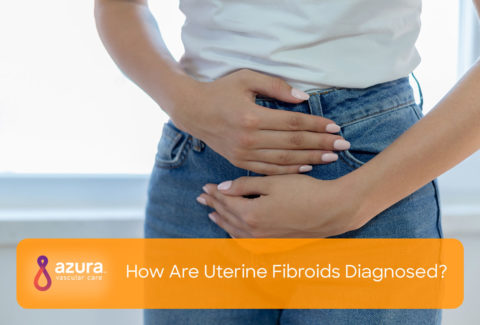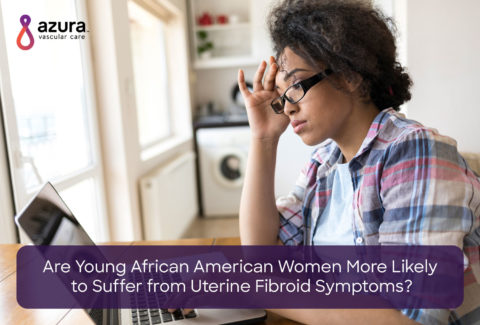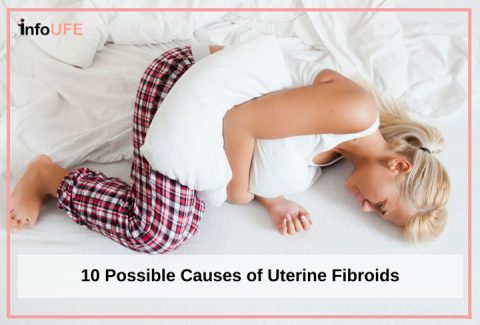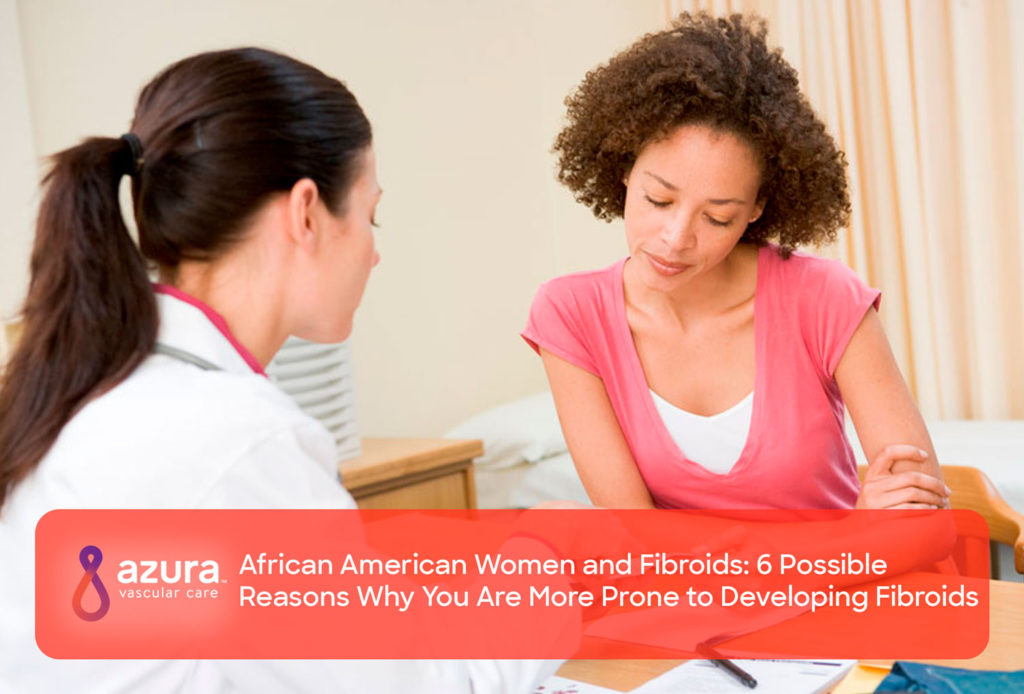
For most women, the chance of developing uterine fibroids at some point in their life is very likely. And if you’re an African American woman, you are three times more likely to develop uterine fibroids than the general population of women, and you are likely to develop them at an earlier age, and may have more significant symptoms.[i] [ii]
In fact, according to a recent study, between 80 and 90 percent of African American women will develop fibroids by age 50, in comparison to 70 percent of Caucasian women.[iii]
The Basics of Uterine Fibroids
So, what are uterine fibroids?
Uterine fibroids, also called uterine myomas, are benign (non-cancerous) tumors that grow in the uterine wall. Uterine fibroids can grow alone or in clusters, and they can be as large as a softball, or so small that they cannot be detected by the human eye.
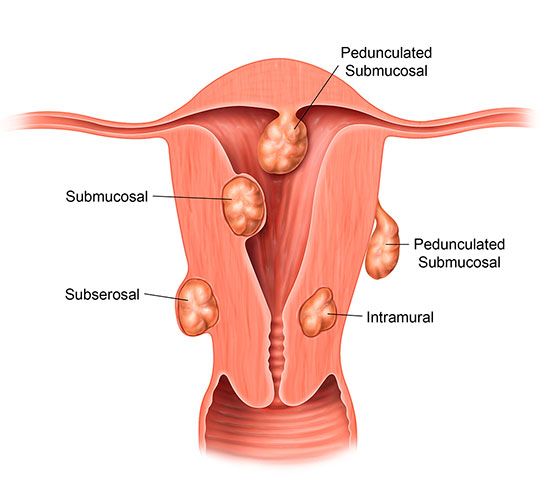
Black Women Have More Severe Symptoms
As an African American woman who has developed fibroids, you are more likely to have symptoms like heavy menstrual bleeding, pelvic pain and anemia (not enough red blood cells). Your symptoms are also more likely to be worse than the general population’s symptoms.[iv] Finally, you are more prone to developing multiple fibroids. As you age, your risk of having more than one uterine fibroid increases.[v]
Black Women and Fibroids: Risk Factors that You Should Know
While much is still unknown about the causes of uterine fibroids, scientists have identified several risk factors they’ve been able to link to how likely a woman is to develop them. Some factors also point to an increased risk for black women. Let’s look at six factors.
- Heredity
- Diet and obesity
- Age when menstruation began
- Drinking alcohol
- Using hair relaxers
- Vitamin D deficiency
1. Heredity
If your mother or sister has or had uterine fibroids, your risk of developing them increases. In fact, your risk of developing fibroids is three times higher if your mother suffered from them.[vi]
2. Diet and Obesity
A poor diet, particularly one that leads to obesity, is linked to many health conditions, and researchers now think that diet could also be a risk factor for the development of uterine fibroids. Recent studies have shown that women who are obese are more likely to develop uterine fibroids. And the consumption of red meat – some studies suggest in particular ham and beef – has been associated with the presence of uterine fibroids, as red meat is linked to increasing estrogen, which encourages fibroid growth.[vii] [viii]

It’s not proven that adopting a healthy diet will prevent you from developing fibroids, but it can’t hurt. Be sure to eat plenty of what scientists call “protective” foods such as:
- Green vegetables
- Fruit
- Fish
3. Age When Menstruation Began
Starting your period at a young age may also increase your risk of developing uterine fibroids. Many studies have shown that, on average, African American young women start their periods earlier than others. According to one study, African American girls experience their first period at 12.3 years old, which is 3 months earlier than other young women.[ix]
4. Drinking Alcohol

Drinking alcohol, particularly beer, may make you more prone to developing uterine fibroids. According to evidence gathered from the Black Women’s Health Study, there is a link between consuming alcohol, particularly beer, and the development of uterine fibroids in black women. If you’re concerned about fibroids, you might want to reduce your alcohol intake, especially beer, to once a week or less.[x]
5. Using Hair Relaxers
If you use hair relaxers, you might consider using them less frequently or not using them at all. Some hair relaxers contain phthalates, a group of chemicals used to make plastics more flexible and thus more difficult to break. These chemicals are also known hormone disruptors and can interfere with your endocrine system, which regulates your hormones. Detectable levels of phthalates in a woman’s urine have been associated with an increased risk of developing uterine fibroids.[xi]
6. Vitamin D Deficiency
Vitamin D, a fat-soluble vitamin, is found in certain foods, particularly dairy products such as milk, cheese and yogurt. Your body also produces vitamin D when your skin is exposed to sunlight. Studies have shown that vitamin D has the ability to regulate the immune system and may limit the production of fibrous tissue by fibroid cells, thus preventing fibroids from developing – so make sure you’re getting an adequate amount of vitamin D in your diet and from exposure to sunlight.[xii]
Despite the increased risk black women have of developing uterine fibroids, understanding your risk factors is key. And, if you’ve been diagnosed with fibroids, know that you don’t have to live with the pain and discomfort they often cause. Reach out to your doctor today to learn more about your options, and you should know that your treatment options for uterine fibroids doesn’t necessarily mean undergoing a complicated surgical procedure – today there are minimally invasive, safe and effective alternatives to surgery for women.
Sources:
[i] Walker C.L., and Stewart E.A. (2005) Uterine fibroids: The elephant in the room. Science 308:1589–1592.
[ii] Huyck K.L., Panhuysen C.I., Cuenco K.T., et al. (2008) The impact of race as a risk factor for symptom severity and age at diagnosis of uterine leiomyomata among affected sisters. American Journal of Obstetrics and Gynecology 198(168): 161–169.
[iii] Baird, D. D., Dunson, D. B., Hill, M. C., Cousins, D., and Schectman, J. M. (2003) High cumulative incidence of uterine leiomyoma in black and white women: Ultrasound evidence. American Journal of Obstetrics and Gynecology, 188: 100–107.
[iv] Steward, E. A., Nicholson, W.K., Bradley, L., and Borah, B.J. (2013) The burden of uterine fibroids for African-American Women: Results of a national survey. Journal of Women’s Health 22(10): 807-816.
[v] Laughlin, S.K., Baird, D.D., Savitz, D.A., Herring, A.H., and Hartmann, K. E. (2009). Prevalence of uterine leiomyomas in the first trimester of pregnancy: An ultrasound-screening study. Obstetrics and Gynecology 113: 630–635.
[vi] U.S. Department of Health and Human Services Office on Women’s Health. Uterine fibroids fact sheet. Retrieved from: http://www.womenshealth.gov/publications/our-publications/fact-sheet/uterine-fibroids.cfm.
[vii] National Uterine Fibroid Foundation. Retrieved from: http://www.nuff.org/health_riskfactors.htm
[viii] Chiaffarino F, Parazzini F, La Vecchia C, Chatenoud L, Di Cintio E, Marsico S. Diet and uterine myomas. Obstet Gynecol. 1999;94(3):395-398.
[ix] Freedman, D.S., Khan, L.K, Serdula, M.K., Dietz, W.H., Srinivasan, S.R., and Berenson, G.S. (2002) Relation of age at menarche to race, time period, and anthropometric dimensions: The Bogalusa Heart Study. Pediatrics October (110): e43.
[x]Wise, Lauren A., et. al., (2004) Risk of uterine leiomyomata in relation to tobacco, alcohol and caffeine consumption in the Black Women’s Health Study. Hum Reprod. 19(8): 1746-1754.
[xi] Catherino, W.H., Eltoukhi, H.M., and Al-Hendy, A. (2013) Racial and ethnic differences in the pathogenesis and clinical manifestations of uterine leiomyoma, HHS Author Manuscripts 31(5): p. 370-379.
[xii] Wise, L.A., et al., (2011) Intake of fruit, vegetables, and carotenoids in relation to risk of uterine leiomyomata. American Journal of Clinical Nutrition 94: 1620-1631.
